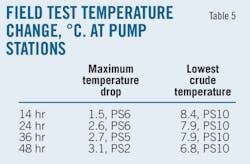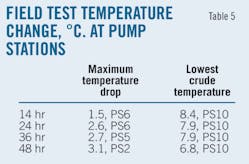Paula Dittrick
Senior Staff Writer
Production results for the Bakken formation in the Williston basin continue to improve with technological advances, prompting Continental Resources Inc. to estimate potentially recoverable reserves of 24 billion boe.
Continental’s estimate dwarfs the US Geological Survey’s 2008 most likely estimate of 4.3 billion bbl of undiscovered technically recoverable oil in the Bakken play.
The difference between the estimates is that recoveries on a per-well basis have increased substantially since June 2007, which was the cutoff for wells in the USGS analysis, Continental said.
The North Dakota Industrial Commission in January announced recoverable reserves from the Bakken-Three Forks reservoirs could reach 11 billion bbl in North Dakota alone—fivefold the NDIC’s 2008 estimate.
Jack Stark, Continental senior vice-president, exploration, told the NAPE expo in Houston that the Bakken play could become the world’s largest discovery in the last 30-40 years. He attributes this potential to “ingenuity of the oil and gas industry.”
Ron Ness, president of the North Dakota Petroleum Council, told OGJ that oil companies expanded “what were considered the sweet spots.”
Having spudded vertical oil wells in the upper Bakken during the 1950s, industry now focuses on middle dolomite between the upper and lower Bakken shale. The formation reaches from Canada through North Dakota and Montana with most activity being in North Dakota.
Fine tuning Bakken technology
Companies drill 2 miles underground and rely on hydraulic fracs with as many as 40 stages using a ball-and-sliding-sleeve system. Swell packers are used to push frac liners into 2-mile laterals.
Drillers and operators acknowledge a learning curve in the Bakken and other shale plays.
Jack Ekstrom, Whiting Petroleum Corp. vice-president, corporate and government relations, said, “There are always science projects early in a play. It takes experimentation to get the optimum recovery as rock properties vary across resource plays.”
More frac stages unlock more oil but also increase costs, prompting companies to try and cut overall expenses by slashing the time it takes to drill and complete a well.
“While debate continues about estimated ultimate recoveries per well, there’s no argument about what the Bakken is producing as a region now,” Ryder Scott Co. LP reported in its March-May Reservoir Solutions newsletter. “In 2010, North Dakota pumped 113 million bbl of oil from the wellhead, almost three times the state’s total in 2006, with most coming from the Bakken.”
Drilling permit activity and rig utilization are at record highs in the North Dakota Williston basin. North Dakota’s rig count averaged 110 in 2010 compared with 49 in 2009. Montana’s climbed to 7 from 3, according to Baker Hughes.
Oil tax revenue for North Dakota reached a record of more than $100 million in March. State tax officials told OGJ that they do not categorize revenue by basin so they cannot say how much of the $100 million can be attributed to Bakken production.
Estimates vary
Many operators are drilling 18,000-21,000-ft wellbores that include 9,500-ft laterals and generally apply 18-30 frac stages/well, Stark said, adding that it’s been Continental’s experience that operators seem to reach a point of diminishing returns between 18 and 24 frac stages (OGJ Online, Feb. 16, 2011).
Continental based its 24 billion boe estimate on the following assumptions about two areas of continuous oil reservoir:
• A recoverable factor of 500,000 boe/well based on Continental’s average results as of Feb. 4, 2011.
• Middle Bakken and Three Forks act as separate reservoirs (500,000 boe/reservoir).
• Dual-zone development (both Middle Bakken and Three Forks reservoirs).
• 320-acre spacing/well (4 wells per zone with 8 wells per 1,280-acre spacing unit).
• Estimated Area 1 having 10,314 sq miles (6.6 million acres) thermally mature.
• Estimated Area 2 having 4,357 sq miles (2.8 million acres) marginally mature/migrated.
Harold Hamm, Continental chairman and chief executive officer, said industry has completed 3,600 horizontal wells in the Bakken and is adding 2,100 wells/year using 170 drilling rigs actively running.
Continental restricts initial production rates on many of its North Dakota wells to minimize natural gas flaring and to maximize the volume of rich gas that can be marketed.
“Some wells have initial flowing tubing pressures of more than 3,000 psi for several days, so they could easily have tested at double or more their announced rates, if we have opened them up,” Hamm said.
As of Mar. 31, Continental had 878,900 net acres leased in the Bakken. As of early May, Continental operated 22 drilling rigs in North Dakota and two in Montana.
Six of Continental’s eight best wells during first quarter 2011 were in the Williston prospect where Continental has leased 110,000 net acres, Hamm said in a news release on first-quarter earnings.
In McKenzie County, Continental reports the Akron 1-27H well on initial production test flowed at 1,407 boe/d at 3,600 psi on a 16⁄64-in. choke. The well targeted the Middle Bakken zone and involved 24 stages.
Multiwell pad design
Continental expects to complete several multiwell projects during the second quarter. Continental’s proprietary ECO-Pad allows four wells (two Middle Bakken, two Three Forks) to be drilled on two adjoining 1,280-acre spacing units from a single pad, increasing recoveries per well and reducing drilling costs, completion costs, and the environmental footprint.
In Montana, Continental is testing several variations on its standard 24-stage, perf-and-plug frac design for well completions. The Big Sky 3-35H was completed in 18 stages using a sliding-sleeve frac system. Hamm said sliding-sleeve fracs are superior to open-hole fracs, which were once standard in Elm Coulee field.
Whiting Petroleum Corp. completed a 40-stage frac in 26 hr on the Smith 14-29XH well in Sanish field in North Dakota. Baker Hughes Inc., which provided the downhole assembly, said it was the world’s first 40-stage frac using all sliding sleeves.
The Smith well was tested Apr. 2 flowing 1,805 bbl of oil and 1,338 Mcfd of gas. The flow rate was gauged on a 48⁄64-in. choke with a flowing casing pressure of 700 psi. Whiting holds a 43% working interest in the Smith well, which it operates.
Slawson Exploration Co. Inc., a private Wichita operator ran 36 stages using packers and sleeves on its Stallion 1-1-12H well in Mountrail County in 2009. Last year, Slawson ran 47 stages in its Cannonball 1-27-34H well.
On May 10, Slawson successfully tested Baker’s 40-stage ball drop system in the Williston basin. The fracturing was completed in 2 days vs. the normal 6-7 days. Slawson was the second to test this system behind Whiting Petroleum.
EOG Resources Inc. is the biggest oil producer in North Dakota having 600,000 net acres leased in Bakken-Three Forks where it reported 49.4 million boe/d gross production at yearend 2010. EOG plans a 10-rig development program in 2011.
Numerous oil companies have invested in the Bakken, including Denbury Resources Inc., known for its carbon dioxide enhanced oil recovery business.
Denbury has 266,000 net acres in the Bakken, where it operates five drilling rigs and expects to operate seven rigs by yearend.
Marathon Oil Corp. entered the Bakken in 2006, drawing upon its experience in reservoir characterization, horizontal drilling, and well stimulation from its other operating areas.
Marathon’s acreage in North Dakota is in Dunn, McKenzie, McLean, Mountrail, and Williams counties. Its Montana acreage is in Richland, Roosevelt, and Sheridan counties.
The Bakken serves as a proving ground for multistage hydraulic fracturing, and its emerging role in unconventional oil production reminds some of the role the Barnett shale has played in boosting US natural gas production.
More Oil & Gas Journal Current Issue Articles
More Oil & Gas Journal Archives Issue Articles
View Oil and Gas Articles on PennEnergy.com




